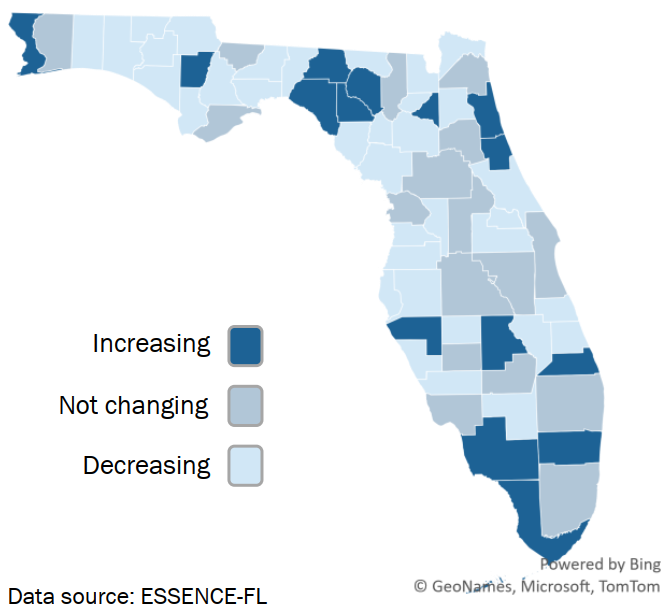Flu Season Information
Influenza (flu) is a respiratory infection caused by a variety of flu viruses spread primarily by droplets made when infected people cough, sneeze, or talk. Less often, a person might become infected with flu by touching a surface or object contaminated with flu virus and then touching their own mouth, eyes, or nose. influenza-like-illness (ILI) is defined as the presence of fever and cough or fever and sore throat without a laboratory-confirmed etiology.
Season
The flu reporting year uses standard reporting weeks outlined by the Centers for Disease Control and Prevention (CDC), where every year has 52 or 53 reporting weeks. Though flu season ends May 17, 2025 (week 20), surveillance continues year round. Seasons vary in timing, severity, and duration. It is not possible to predict what each flu season will be like in Florida.




Connect with DOH